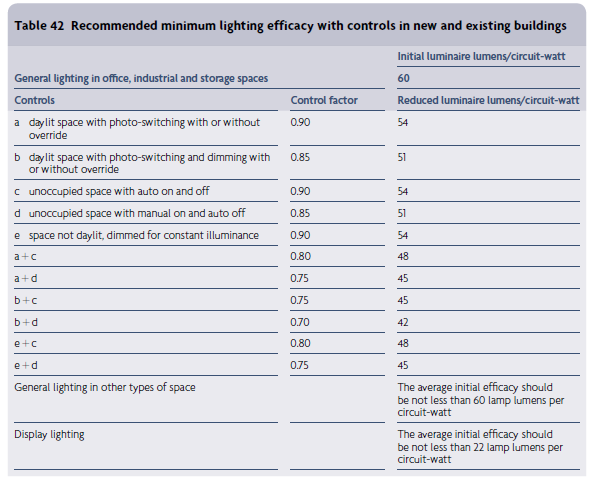What Part L is and why it is crucial for lighting controls
Written by Lewis Morgan
Posted on April 16, 2014
Lighting is an essential element in Part L of building regulations which specify measures for power and fuel conservation.
It was introduced in the 1990s and has been revised several times with the latest revisions coming into effect on April 6th this year (2014).
The changes make it even more crucial for any lighting project to be carried out by an experienced team that can specify and install effective lighting controls. The team must know the most effective locations for both occupancy and daylight sensors to maximise the energy savings, while having a sound understanding of how to deliver excellent efficiencies in any workplace design.
Within Part L for lighting, there has been an increasingly strong focus on the most energy efficient methods of lighting control, from the introduction of control factors in 2002 which gave lighting designers more freedom to choose from a broader range of luminaires to the current revisions embodying important changes that we in the lighting sector should all understand.
LENI and dimming
The two essential changes this month are the introduction of the Lighting Energy Numeric Indicator (LENI) and greater emphasis on dimming.
Before the changes announced in 2013, and now in effect, Part L described areas as desk-based, display and others. Apart from desk-based activities, the metric was lamp lumen efficacy which meant that as long as the lamp was ‘efficient’ then it complied, no matter the range of potential inefficiencies inherent in the metric.
As of now, though, luminaire efficacy applies everywhere but there is another option. Along with a conventional solution based on luminaire efficacy (with or without controls), there is also the well-supported Lighting Energy Numeric Indicator, or Leni.
Government building regulations advise that Leni is a measure of the performance in lighting in terms of energy per square metre per year (kWh/m2/year) based on BS EN15193:2007 Energy Performance of Buildings. Energy requirements for lighting.
What makes LENI so popular with the lighting sector is that it is a more holistic method to measure predicted energy in use, going beyond the simple efficiency of a luminaire and because if focuses on the system, not just the luminaire, it becomes more important to consider lighting controls as these add energy efficiencies by their very nature.
Underpinning the Leni philosophy is the imperative for good lighting design as well as technical expertise, knowledge and experience.
Leni embraces daylight, occupancy, operating hours and the controls package to predict lighting energy use for the building. The methodology clearly differentiates between environments, so will easily provide more accurate metrics for similar buildings in different locations that have differing daylight hours, for example.
Plan L and Target Emissions Ratings
Of course, the use of lighting controls is an integral part of the National Calculation Method (NCM) that designers can use to calculate the Target Emissions Rating for any building and this is where dimming becomes a crucial element in energy efficiency. The NCM has daylight-linked operation and occupancy control but, significantly, does not include controlled or constant illumination.
This is where dimming comes into its own as, whichever of the two metric methodologies is chosen, a dimmable system will deliver further energy savings that will count towards the Building Emissions Rating (BER).
The new regulations for non-domestic buildings include a table of all the new control factors and the effects of combining different control strategies. By choosing correctly, it is possible to achieve a control factor of 0.70, or more simply, reduce the minimum required lumens per watt from 60 to 42. At the same time, the different combinations offer much greater flexibility for the design team to specify optimum lighting.

Energy efficient lighting is now required in most buildings and Part L compliance is essential when extending a building or replacing existing lighting systems as part of re-wiring works.
- L1A New dwellings.
- L1B Existing dwellings.
- L2A New buildings other than dwellings.
- L2B Existing buildings other than dwellings.
L1A and L1B documents refer to the Domestic building compliance guide which can be downloaded from the government planning portal website:Domestic Building Services Compliance Guide: 2013 Edition
L2A and L2B are covered in the Non-domestic building compliance guide, again available on the governments planning portal website: Non-Domestic Building Services Compliance Guide: 2013 Edition
As you can see, Part L is very complex and it is crucial to ensure that any lighting scheme is compliant. Energy efficiency is central to building projects simply because the Government must drive consumption reductions in all sectors to keep to their tough targets for carbon emissions reductions.
The SaveMoneyCutCarbon Field Services Team has the knowledge, expertise and experience in delivering an end-to-end fully managed lighting project. Call 0845 123 5464 to discuss your lighting project requirements.